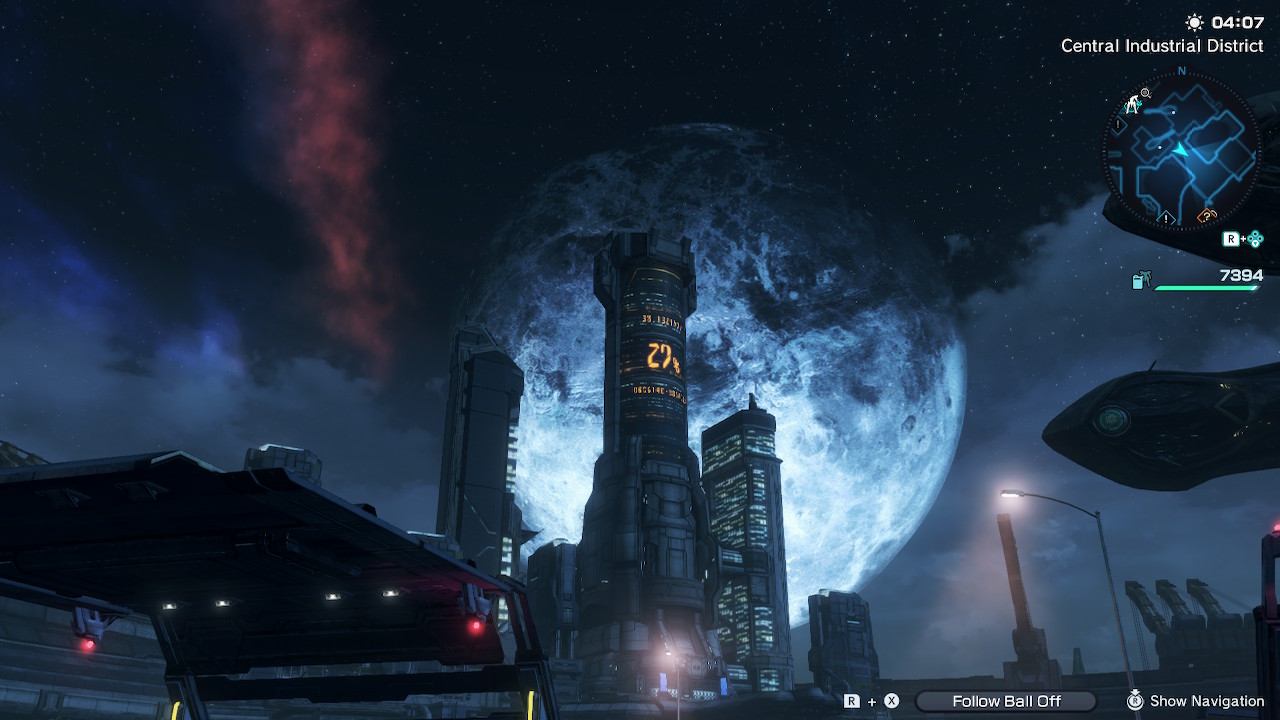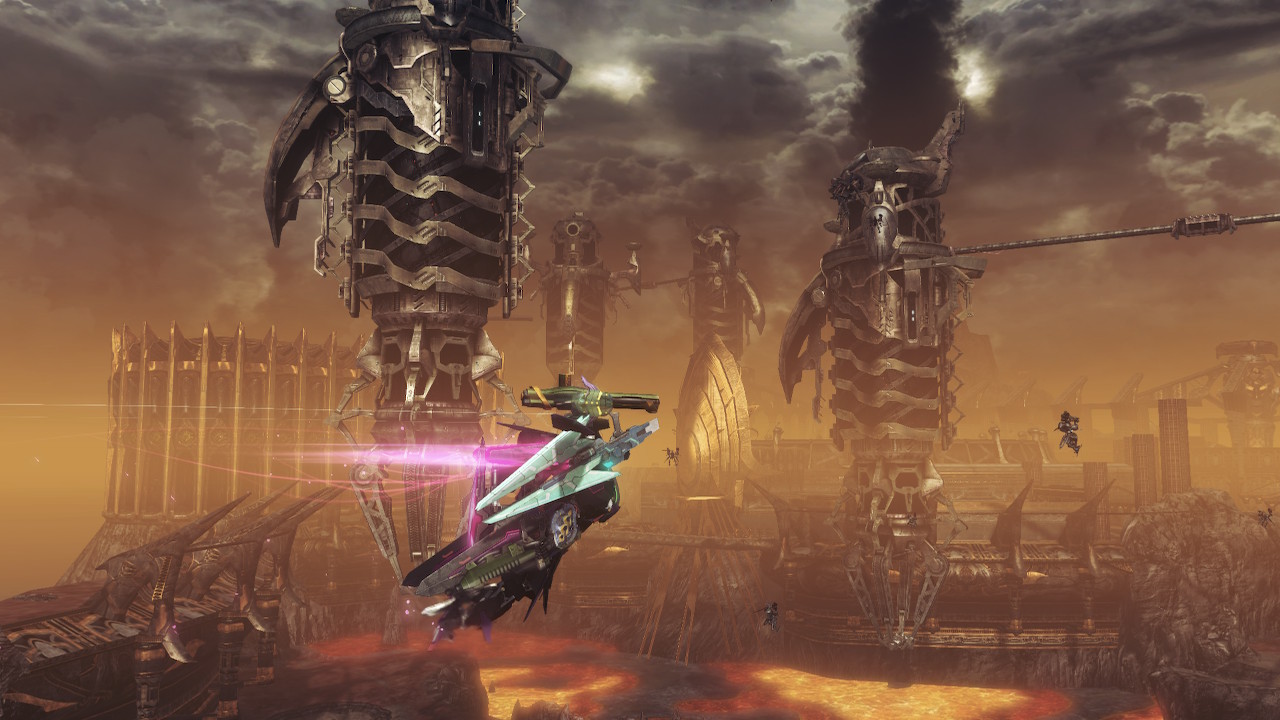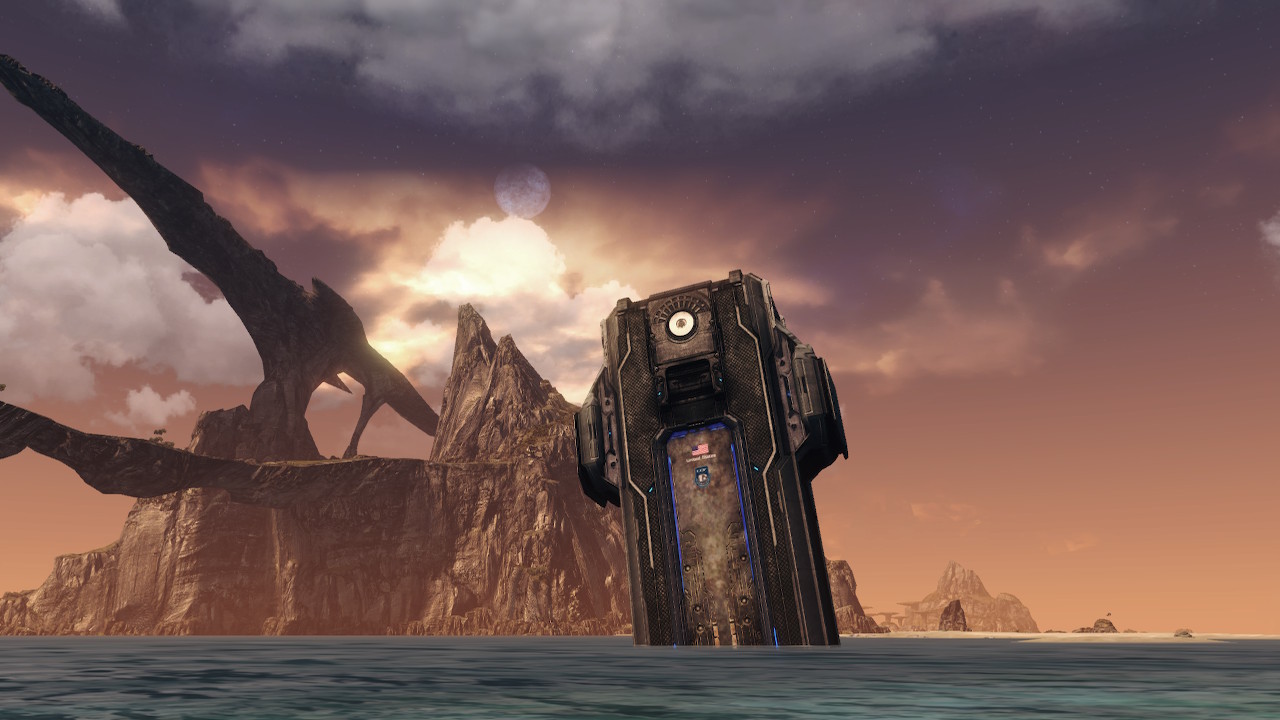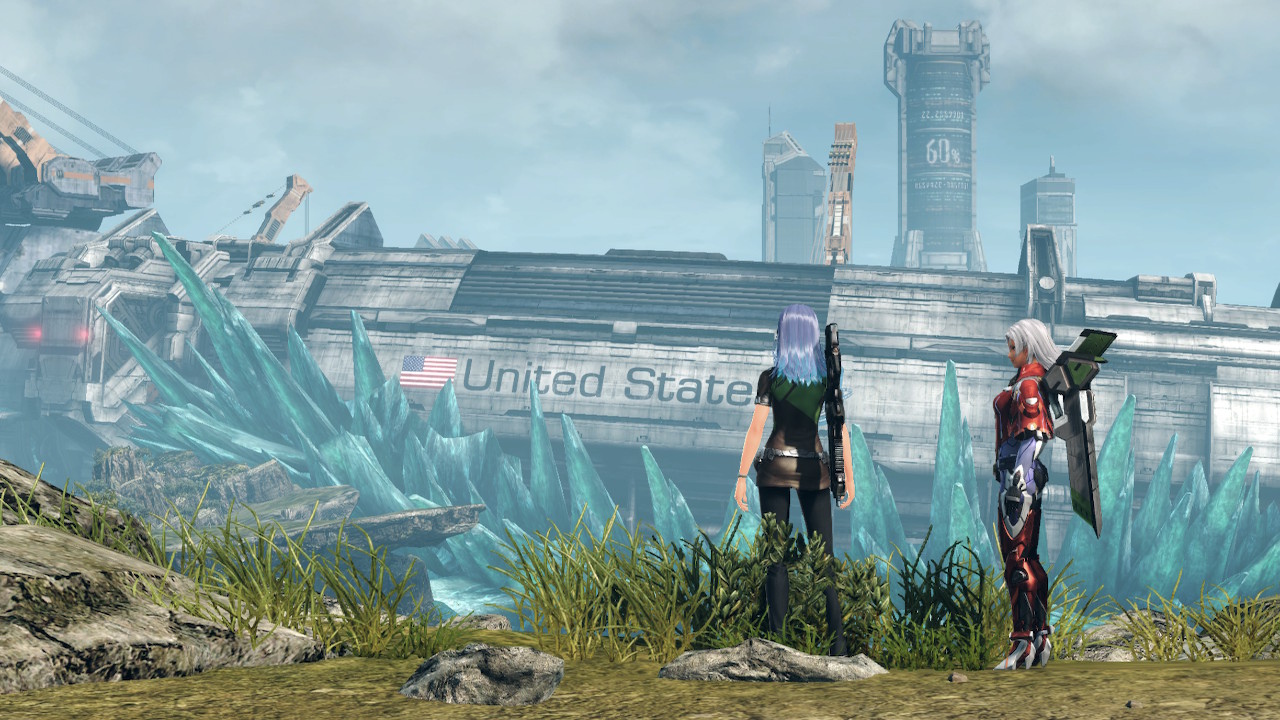Marveling at the Mundane Magic of Mira
making a new home across the kos-mos

I've spent some time wondering why it took me so long to finally play Xenoblade Chronicles X. Physical access is likely some portion of it-- I
never owned a Wii U and usually lacked the disposable income to get one-- though I'm not convinced that's the main reason. I'm fluent in emulators, and the community
for X seems
quite passionate about making it
playable. Instead, I am more inclined to point a finger at its black sheep reputation in the franchise. In a series (and metaseries) whose claim to fame is tight
narratives, hearing that this one is "the gameplay Xenoblade" was disheartening. A new world at the scale and depth that Monolithsoft consistently deliver
is a wonderful prospect, but it loses some shine if it is not tightly integrated with the story as the mainline games have gone on to do. Additionally, I had heard
that it features numerous gameplay mechanics that feel like significant divergences from what the main series would grow into.
Some of these concerns definitely ended up being true-- particularly in the narrative department. As I got a stronger foothold in the game, though, I came to see things
in a more charitable light. XCX is certainly a departure from the formula established in XC1 and followed by 2 and 3. However, it is a
lateral move. It offers intriguing reinventions of systems I would think foundational, and has a different approach to storytelling that I really grew to appreciate.
In many ways, I feel that Xenoblade Chronicles X lives up to its title as a game from another world.

The main story of XCX is exceptionally weak, especially coming from the Xeno- pedigree. It kicks off with a bang:
two xeno races-- XCX's word for aliens--begin fighting in the periphery of Earth's orbit; The ensuing ditritus and rubble from the conflict
begins to fall to Earth, bombarding the planet with wave after wave of micro meteor storms. Humanity is forced to flee their home for the stars aboard
a series of colony ships, hoping that they could find a new home somewhere out amongst the cosmos. During their travels, one of these colony ships is shot
down by remnants of those two warring xeno factions and crashes over the mysterious planet Mira. Twice struck by tragedy, the scant remaining survivors set
about turning the wreckage of their ship into a new home, the city of New Los Angeles. From their base in NLA, humanity is tasked with carving out a new
way of alive amongst a planet full of indigenous life and other xeno races that have found their way down to Mira.
All that is covered in the first hour of the game, and is the most in-depth the overarching narrative gets in the following ninety hours. The story
follows a monster-of-the-week cycle for most of its runtime: headquarters has located an important part of our crashed ship, so we rush to the location
only to see a hostile race has beaten us to the punch; after a skirmish, we return to base and await further intel. Minor points of intrigue pop up here
and there, such as encountering a more friendly xeno race or finding out a new quirk of living on Mira, but the overarching narrative is extremely
cyclic.
These issues compound with poor storytelling whenever the game does decide to address the plot. Take for example the inciting incident of the
game, the war between two xeno races. One of those groups, the Ganglion, is given a great deal of focus in the narrative. The other, however, does not appear
in the base game outside of that opening cutscene. XCX never speaks on where those xeno come from, why they fight the Ganglion, why they came to Earth,
or even something as basic as their name. There are many further instances of the game introducing a concept or object in-world, and simply never explaining
them in any regard. This leaves the larger narrative disappointingly porous. As someone whose adoration for the Xeno- franchise stems from its complex
and thorough narratives, this certainly chafed at me.
All this is not meant to suggest that the game is empty-- no, it is far from it. In the space left by the story, XCX chooses to commit itself wholeheartedly
into communicating the texture and feeling of its world. Parallel to the main story is a staggering amount of side quest content, which each take the form of
more elaborate multi stage vignettes that capture the day-to-day life of humanity's survivors. At first, these stories are focused on the bare necessities like
hunting the local wildlife to build up a food supply, and gathering electrical components to develop a water treatment facility. As the player gets comfortable on
Mira, however, so too do the rest of the survivors. Their needs evolve from necessities to nice-to-haves, and a pleasant sense of mundanity creeps in. Initially,
scraps of wire may be used to repair Skells, the massive mecha seen stomping around the city; in the later parts of the game, that wire may instead be needed four
steps into a quest line to be turned into an engagement ring, as you've helped along some resident of NLA court their significant other.
The game will also have you act as emissary to other xeno races that decide to immigrate to NLA. Now, in addition to fixing a cafe's automatic coffee grinder,
you will also have to take part in race relations. Sometimes this is as mundane as creating a new fashion line incorporating xeno's clothing style, or
introducing xenos to the finest of human cuisine-- DiGiorno frozen pizzas. Sometimes it is patching culture differences through immersive experiences, and other
times still it is putting down a gang of human supremacists who want to, in no uncertain terms, ethnically cleanse xeno demographics.
All of these conflicts feel incredibly grounded. They are focused on the small scale, personal conflicts that reasonably come up in day-to-day life. They are
intimate peeks into what life would be like on a distant corner of the cosmos, and I felt that the side stories had the pull to keep me immersed that the
main story lacks.

Xenoblade Chronicles X is not breaking new ground when it centers its gameplay around a titanic open world filled to the brim with vistas to visit and
populated with people to please; those has been a deserved selling point of the franchise since its inception. Instead, XCX carves its identity out by
layering a few different flavors on the way the player interacts with the world. These arise due to the game's technical achievement. Mira is notably a truly open
world, the first-- and to date, only-- one of its kind in the series. This grants it at least two unique ways of immersing me in Mira. first, it increases my time
spent navigating the world. With no loading screens to halt my action and the game taking place on a seamless contiguous landmass, I spend more time gazing
at alien architecture than human made menus.
Secondly, it makes my journey across Mira really feel like my journey. I do not discover new areas by having the story carry me there, as is the case in
XC2. If I want to see what's across the nothern see in that glowing green globe in the sky, I need to make the journey myself. This means crawling up and
down mountainsides and ducking around hostile xeno encampments, hoping that oversized spiders don't drop down from the trees surrounding me and wipe my party.
I am forced to contend with the environment directly. This makes the game's themes of fighting for survival all the more personal. I am cutting my own way
across the planet.
When I looked at more gamified systems like equipment, economy and party management, I thought it was painfully obviously that Monolithsoft is desperate to make
a full scale MMO. The bones of XC1 are clearly visible: cooldown-based real time combat with an emphasis on positioning and ordering of attacks. The
elements XCX layer on top of it feel right out of FFXIV. Instead of the relatively static roles assigned to each character in 1, the main character
can take on any one of twelve classes each with their own gameplay niche and equipment loadout. Even the player's party is highly customizable, with a cast
of seventeen that can join your party.
Though while it is impressive to have this incredibly fine grained level of customization, I mostly felt overwhelmed. There are at minimum five sets of
equippables to track per character. Distributing that over the cast of 17 requires a mental fortitude I couldn't bother to dedicate and as a result most of
these characters were little more than names on a screen to me. This was worsened by the fact party composition becomes less relevant the further you progress.
Once you unlock Overdrive, XCX's form of chain attacks, the only thing you really need to care about is damage output. That is certainly a type of
fun, but nevertheless invalidates a large chunk of that extensive customization.

To speak briefly on the added epilogue content, I ranged from unimpressed to actively upset. Some of my qualms are unavoidable, such as noticeable changes
in voice acting and direction. It's reasonable that actor's voices change in the ten years
its been since they originally recorded for the game. Unfortunately, I felt that many others issues come from abrupt changes into the texture the previous 100 hours
of game had spent cultivating. The manner of storytelling was done differently, through (visually impressive) animated stills with narration instead of in-engine
cutscenes. The writing had a different voice behind it, noticeable as many characters like Gwin, L and Irina crossed the wrong side of the line from quirky to
flanderized.
Most damning to me is that the epilogue decides to focus on offering more story than more gameplay. I would normally be ecstatic about this decision, especially
in a Xeno game. XCX is close to the sole
exception to this. As I mentioned earlier, the main thread of the game is very thin; it leaves many ideas understated and devotes a majority of its time to everything
around it. This increases the burden on the epilogue to deliver, as it doesn't have much to work with that was in the game originally. It would be a tricky task
to make the new story content feel like a meaningful extension of base content. Tragically, I feel like they completely fail to do this. I found the new additions
to be unsatisfactory answers to these questions. It felt somewhat like checking a box off a list as opposed to resolving a plot point. Most frustrating is the game
chose to resolve many more threads by confidently not addressing them and moving on. The true conclusion of the game ultimately says "Yes, we are aware there are
many things we should still answer. We are not going to." That sucks.
It would be just a touch hyperbolic to say I got nothing out of the epilogue. There were some phenomenally directed action sequences involving the game's Skells.
I got a kick out of that, at least.
In hindsight, I am somewhat glad it took me so long to finally play Xenoblade Chronicles X. It does not provide a lot of the things I most value in
a Xenoblade game, and if I had played X in closer proximity to any game from the mainline trilogy I would not have enjoyed my time with it nearly
as much. Its story is lackluster; its mechanical systems sometimes buckle under its own weight; the things it does best well, being the magnificent exploration
and combat, are something the other games also successfully deliver in addition to being tighter experiences.
This does not mean that has nothing to offer, however. Its merits, as I have said a few times throughout this writeup, lie in a more subtle direction. They are
tasted in the textures of implementation. Xenoblade has done open worlds before; it has not forced you to analyze the landscape in front of you to find a
way forward. It has done base building and social simulation elements before through Colony 6 reconstruction and dev levels; it has not brought it to the front and
center in the manner NLA does. All the high notes of the Xenoblade series exist in X. They are just played to a different tune.
I would not have appreciated Xenoblade Chronicles X if I had played it any sooner. It is the Final Fantasy 8 of the Xenoblade franchise:
mechanically lateral, narratively underwhelming, but presentationally interesting and engaging. If you feel at all curious about what a Xenoblade game
might look like in an alternate universe, then XCX has your answer.





